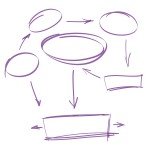For the past two decades, insurers and reinsurers have licensed catastrophe models from AIR, RMS and EQECAT, and each vendor model came with its own front and back end to handle the model input and output. Today, CEOs of companies with catastrophe exposure are likely hearing about newer technology such as multimodel platforms, open source and open platforms.
Executive Summary
Addressing insurer and reinsurer needs for more model choice, as well as greater transparency and efficiency, catastrophe modeling firms are changing their platforms—but they’re not all doing it the same way. Here, catastrophe risk expert Karen Clark explains the differences.These technology changes are being driven by market demand for greater transparency, flexibility and efficiency with respect to catastrophe modeling processes.
While the traditional vendor models have served the industry well over the past 25 years, sophisticated insurers and reinsurers now want models and modeling processes that are more open and in line with today’s technology. Because the license fees from the model vendors continue to increase, companies are also looking for cost-effective solutions.
Other significant drivers of change are the recognition that there is no “right” or “best” model—all of the models are plagued by wide uncertainty—and the growing regulatory requirements that companies fully understand and take ownership of the assumptions underlying their catastrophe loss estimates.
So, what are these new platforms all about and how are they different?
Multimodel Platform
Two of the model vendors, AIR and RMS, are developing multimodel platforms. A multimodel platform allows users to run catastrophe models developed by the vendor and others, such as Applied Research Associates and Risk Frontiers, on one platform using the same user interface and data formats. This has the potential to offer more model choice and greater efficiency for companies that want to run many different models.
For example, a reinsurance underwriter could enter a client’s data into a single system and launch multiple hurricane models with just a few keystrokes. Instead of having to generate model output from different platforms, all of the information for reporting and analysis will be available in one system.
But a multimodel platform does not address the other important requirements of transparency and flexibility. The models you run on these platforms will still be proprietary third-party models. You will not be able to see many of the important model assumptions or easily customize those assumptions to better reflect your unique books of business and to build your own views of risk.
The AIR and RMS multimodel platforms also do not address the cost effectiveness of the catastrophe modeling processes. There will be additional license fees, and more importantly, insurers and reinsurers will have to spend more time and resources to test and validate the different models to see which ones produce credible results for their books of business.
An added complication is neither AIR nor RMS has agreed to allow their models to be hosted on the other’s platform.
Open Source
 Open source means the actual computer code underlying a software application is freely available to all users. An open source modeling platform would be the least expensive option for insurers and reinsurers. But open source can also be the most difficult to implement because only software professionals who have in-depth knowledge of computer programming and the particular application will be able to understand and modify the source code.
Open source means the actual computer code underlying a software application is freely available to all users. An open source modeling platform would be the least expensive option for insurers and reinsurers. But open source can also be the most difficult to implement because only software professionals who have in-depth knowledge of computer programming and the particular application will be able to understand and modify the source code.
Oasis is a not-for-profit organization that is developing a multimodel platform designed to host many of the same models that will be on the AIR and RMS multimodel platforms. The difference is that the Oasis platform will be free and will have an open source financial module.
The Oasis platform does not provide many of the front- and back-end tools required by model users for exposure data management, pricing and portfolio analytics. Companies that wish to use Oasis for day-to-day risk management decision-making will need to invest in additional software and other resources, which might be an acceptable trade-off given that the platform itself will be free to use.
Open Platform
Rather than providing different third-party model views, an open platform is designed to enable users to directly build their own views of risk. An open platform starts with “reference” models by peril region, and all of the components of the reference models are fully transparent and accessible by the user.
The philosophy behind the open platform is that only with full transparency on all model assumptions, and with the ability to easily access those assumptions, can companies really understand what’s driving their loss estimates. Full visibility allows for proper validation and peer review in order for insurers and reinsurers to have confidence in the numbers they’re using for important risk management decisions.
Running different models will give you many different numbers, but you need to decide how credible those numbers are before choosing the ones you’ll use to manage your business.
As opposed to open source where you have to know computer code to change model assumptions, with an open platform you can customize the reference model assumptions with built-in tools. For example, if you want to test the impacts of climate change, you can create a new catalog of hurricane events reflecting higher wind speeds. You can easily adjust event frequencies and severities to test different near-term views. After an actual event, you can validate the damage functions with claims data because the vulnerability curves are visible and customizable.
For full disclosure, the author’s company, Karen Clark & Co., has developed the RiskInsight open platform. It’s the author’s belief that running and adjusting multiple vendor models is an expensive and inefficient way to develop your own view of risk—particularly since you can’t see inside these models. An open platform enables you to leverage your knowledge and build your views of risk more efficiently and scientifically.
Today, there are more choices than simply AIR, RMS and EQECAT. Given the fairly radical changes underway, most companies are taking this opportunity to thoroughly evaluate their internal processes and all of the new tools before deciding how they’ll move forward with the next generation of catastrophe risk management technology.
It’s an important decision worthy of thorough investigation.





















 Why Insurance Telematics Integrations Fail
Why Insurance Telematics Integrations Fail  U.S. E&S Outlook No Longer Positive: AM Best
U.S. E&S Outlook No Longer Positive: AM Best  ‘Dream Is in Sight:’ Chamber, Reinsurers, Insurers Urge Florida to Stay the Course
‘Dream Is in Sight:’ Chamber, Reinsurers, Insurers Urge Florida to Stay the Course  Berkshire Hathaway Announces Leadership Appointments: New CEO at GEICO
Berkshire Hathaway Announces Leadership Appointments: New CEO at GEICO 









